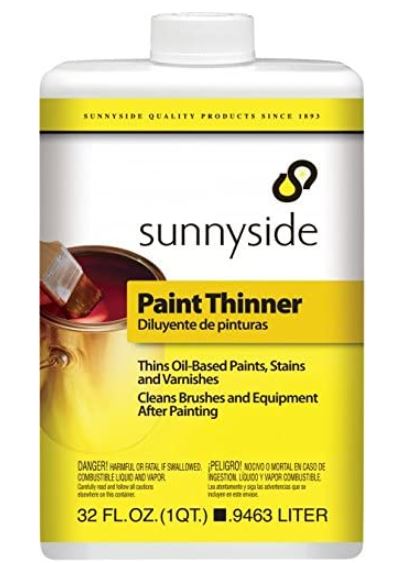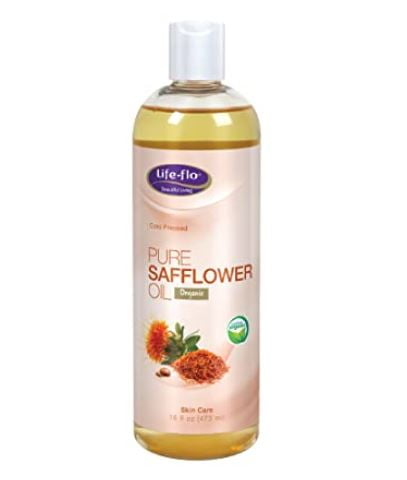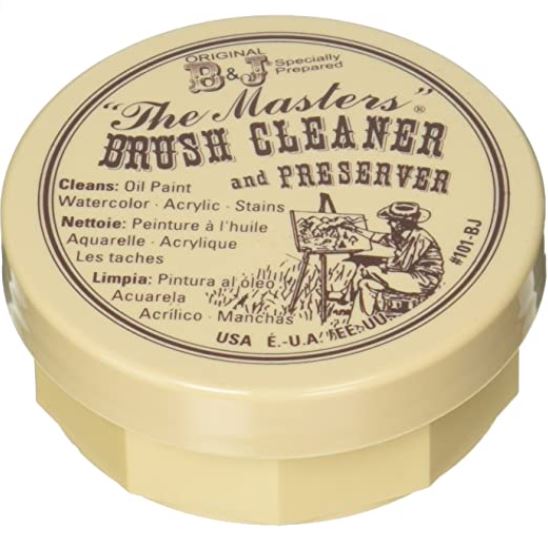How to Clean Oil Paint Brushes? Are you excited to start your new project but keep thinking about the mess and about having to clean your brushes later? We hear you; however, learning how to clean oil paint brushes is vital for the durability of your brush. The reason why today we’ll be telling you how to clean oil paint brushes like a pro!
We’ve all been guilty of tossing more brushes than we can count due to failing to properly clean them following a paint project. If you want to save money and brushes, you ought to learn how to clean oil paint brushes correctly.
Now that you know the importance of cleaning your brushes whenever you paint, it’s time to learn about the actual process. Contrary to what you may think, it is not as complicated. However, you need to learn a few tips and tricks to do a proper job. Below is everything you need to know about how to clean oil paintbrushes.
How to Clean Oil Paint Brushes
Method 1: Solvent
- Remove the wet paint from the brush
- Clean the brush with solvent
- Make sure to use solvents only in a well-ventilated area. Place enough of the solvent to completely submerge the bristles in a plastic bowl or another small container. Do not dip a dirty brush directly in the solvent’s original container.
- Stir the brush in the solvent for 10 to 30 seconds
- Wipe the bristles against the side of the bowl when finished
- Repeat until no more paint comes off the brush
- Rinse the brush in a bowl or under running lukewarm water
- Add a few drops of liquid dish soap to the water or directly onto the bristles if needed
- If you rinse under a tap, hold the brush with the bristles down to keep water from entering the ferrule
- Use your fingers to rub or massage the remaining residue from the brush
- Rinse the brush in warm, soap-free water to remove any remaining soap from the brush.
Recommended Product
Sunnyside Paint Thinner, Cleaner, and Degreaser
With Sunnyside Paint Thinner, paintbrushes, rollers, and sprayers clean up quickly—dip, dunk, then dry.
The sticky, gummy residue is no match for Sunnyside Paint Thinner—clean sap off garden tools, sticker residue off the glass, and more.
Excellent for use indoors, especially where odorless thinner is required, such as in hospitals or nursing homes.

Features:
- Completely odorless
- Removes and dissolves grease, grime, and oil
Method 2: Vegetable oil + Soap
- Blot the excess paint from your brushes onto a rag or some old newspaper.
- Dip them into a bit of oil and work it into the bristles with your fingers. This will help to get any further paint from your brush.
- Blot and repeat until there is no more paint coming out.
- Finish the clean-up operation by washing with soap and water.
- Once your brushes are clean, the best thing to do is hang them up by their handles so that any moisture can run out of the brush head and not sit in it and cause it to rot.
Recommended Products
Life-Flo Pure Safflower Oil
Certified organic and cold-pressed Safflower Oil is hexane-free and food-grade.
Organically grown and cold-pressed, Life-Flo’s Pure Safflower Oil is genuinely versatile. Whether for cosmetic or therapeutic purposes, you can trust our food-grade, hexane-free oil to deliver the powerful benefits you’ve been looking for.
Drying oils such as linseed, safflower, walnut, or poppy oil are suitable for cleaning brushes during the painting session.

Features:
- Versatile
- Organic
General Pencil Masters Brush Cleaner
Keep brushes like new with this lemon-scented cleaner and preserver. Even old, hardened oil paint brushes may be restored to their original snap and luster.
Non-toxic, water-soluble cleaning compound works safely on oils, acrylics, or watercolors. Rinse the brush under warm water, swirl it in the cleaner until a lather forms. Repeat if necessary until the brush is clean—no harmful fumes or odors.

Features:
- Non-toxic
- Water-soluble
- Lemon-scented
Common Questions Regarding How to Clean Oil Paint Brushes
How do you clean oil-based paint off brushes?
Use solvent or paint thinner to clean oil paint from paintbrushes; soap and water won’t work. Cleaning paintbrushes before the paint has a chance to dry on them is the best way to keep your equipment in good shape. Cleaning with paint thinner can be pretty messy, so work in a garage or outdoors if you can.
How do you clean oil paintbrushes without paint thinner?
If you run out of paint thinner, you can use mineral spirits or turpentine. Paint thinner is a petroleum-based product, so mineral spirits do well in their place. The spirits can be used to thin paints or do the final cleanup when you finish painting.
After the mineral spirits or turpentine has been used, you should rewash the brush with warm soapy water and rinse it thoroughly.
How do you clean an oil brush?
General steps to clean an oil brush include
- Brush out any excess paints
- Shake off the paintbrush
- Squeeze any excess paints
- Soak the bristles in a cup of mineral spirits or paint thinner in a well-ventilated space for a few minutes.
- Swirl the bristles through the solution
- Remove and lay the brush flat on a rag
Can you use vegetable oil to clean oil paintbrushes?
The answer is yes; you can use standard household vegetable oil to clean your paintbrushes. You blot the excess paint from the bristles, dip the brush in oil, and use your fingers to work the oil into the bristles thoroughly. Then rinse the brush and wash the bristles with warm soapy water to remove the oil.
How do you get dried oil paint out of brushes?
- Remove as much paint as possible from the brush by running the brush firmly against the rim of the paint can several times.
- Soak the brush with hardened paint in vinegar for an hour. If the bristles don’t bend, soak for an additional hour.
- If it needs more loosening after two hours, submerge the brush’s head in vinegar in a pot, place the pot on a stove, and bring it to a boil. Afterward, please remove it from the heat and allow it to cool off.
- Remove the brush with care and use a potholder or tongs if needed.
- Once cool, comb out bristles with your fingers or a brush comb.
- Rinse out the loosened paint with water and repeat as necessary.
How to dry and store your brush?
- Shake the brush vigorously above a paint pail, cardboard box, or another container.
- Alternately, use a brush spinner to spin the brush dry above a container. Repeat as necessary.
- If moisture remains, blot it on a newspaper, paper towel, or a clean cloth until the brush has dried.
- To store, lay the brush flat or hang it with the bristles pointing down.
Additional Tips on How to Clean Oil Paint Brushes
- You must clean the paintbrush immediately after use to prevent the paint from hardening and causing irreversible impacts.
- Never use gasoline to clean paintbrushes because gasoline damages the brush’s bristles.
- High-quality brushes should last for a very long time if you look after them. But it would help if you were rigorous with your cleaning procedures.
- If you plan to use your brush again in a few days, dip the tip of your brushes in a slow-drying oil such as Safflower Oil or an artist-grade poppy seed oil. This is slower drying than the more popular linseed oil.
- When you get new brushes, save the packaging and use it for storage, if possible. The cover will help the brush retain its original shape.
- Never let your brushes sit unattended for more than a day. The paint will dry, and the bristles will harden.
- To dispose of the paint thinner, pour all the paint thinner into a single can. Replace the lid securely. Contact your local waste disposal service to ensure proper disposal.






